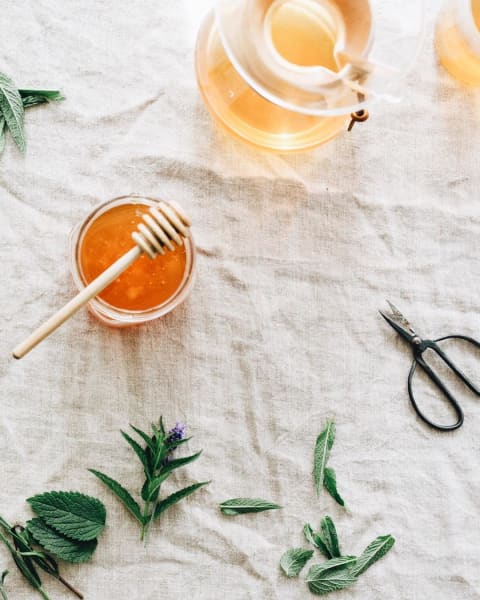The Jun base is an effective probiotic, and like other fermented foods, it helps replenish your gut of friendly bacteria—a great aid to the digestive system. It’s often referred to as the Champagne of kombuchas due to its delicate taste and high-quality ingredients. The main difference between Jun and kombucha is that the SCOBY (acronym for symbiotic culture of bacteria and yeast) is trained to feed off of honey rather than sugar from the start. If you put a kombucha culture in a honeyed tea, the bacteria wouldn’t feed properly and would likely die. The Jun culture, however, is designed to use honey as its fuel source. Other than the high-integrity ingredients used in Jun, another advantage is that it ferments at a lower temperatures so it’s much easier to make in the kitchen without having to purchase extra heating equipment typically necessary to make kombucha. Because the honey doesn’t need to be broken down as much as cane sugar, it ferments quickly, a great bonus for those of us who love instant gratification! The mythical stories told of Jun’s origins might be a simple function of local farmers’ practices and ecology. In Japan, for example, koji (Aspergillus oryzae) is a culture that starts from rice simply being thrown onto healthy soil. Jun may have risen in the same indirect manner.




